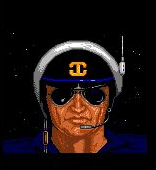Starflight Hacking
In the course of my research into Starflight I have discovered many things. Some are available elsewhere on the interweb, some are not.
I will include a few choice items here.
I will include a few choice items here.
Amiga version :- Graphic Archives
The graphics are stored in a bespoke format TLB.
Be aware that the byte ordering is motorola format.
Each archive starts with a header.
Be aware that the byte ordering is motorola format.
Each archive starts with a header.
typedef struct TLBHEADER
{
char Type[4]; //TLBR
int Filelength;
short NRecords;
char Padding[2];
}t_tlb_hdr;
There then follows NRecords +1 int's which are the offset of each graphic within the file.
The extra int exists so you can get the length of the last graphic.
Each graphic starts with a six byte header, byte 5 of this is a type byte which specifies the storage used for this graphic.
Byte 4 is a scalar, usually the width in bytes of the graphic.
The identified types are...
The extra int exists so you can get the length of the last graphic.
Each graphic starts with a six byte header, byte 5 of this is a type byte which specifies the storage used for this graphic.
Byte 4 is a scalar, usually the width in bytes of the graphic.
The identified types are...
Type 7This is an animated sprite, I haven't decoded this yet.
|
Type 10This s a pallete.
Each four bytes maps to a pallete record with byte 0 being the index within the pallete and the next 3 the RGB values. |





